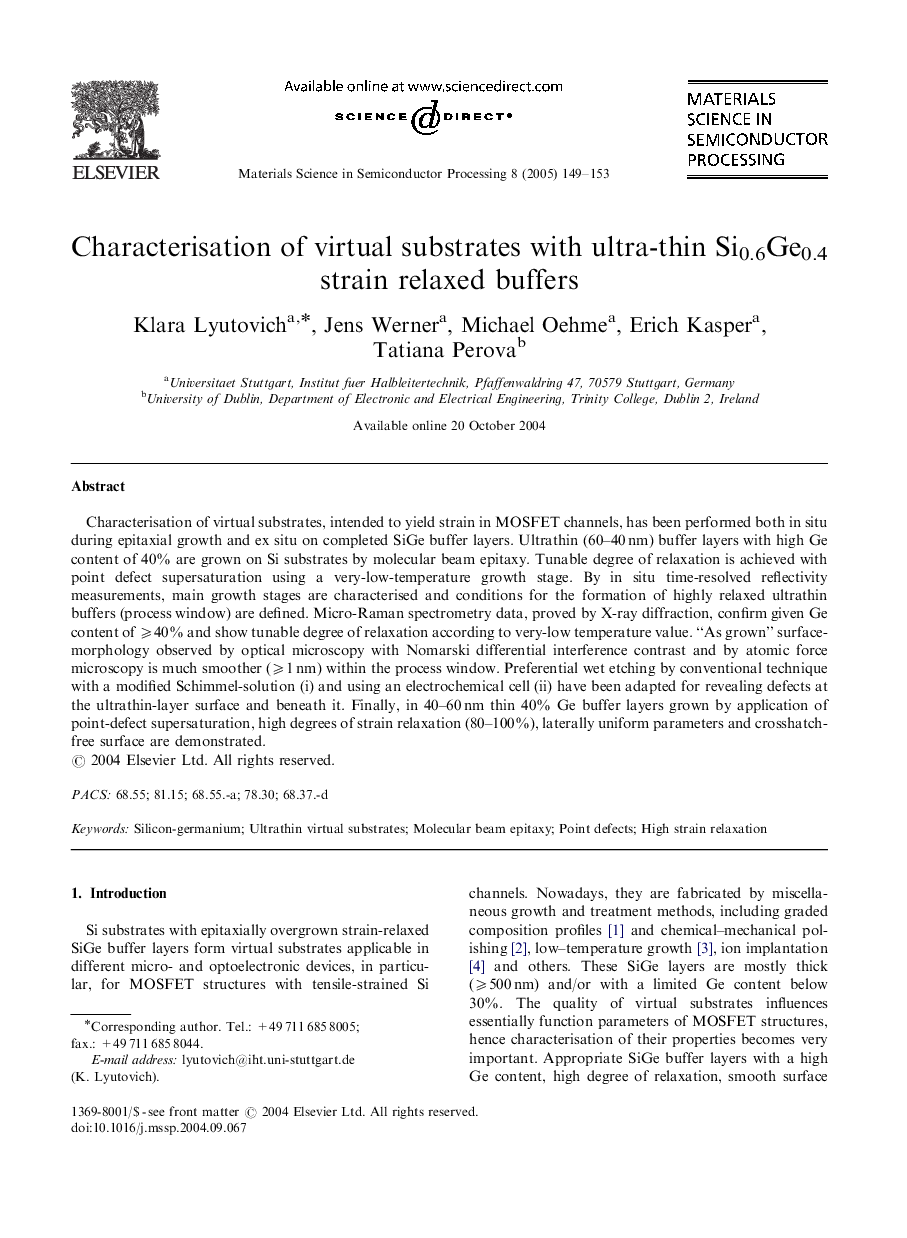| Article ID | Journal | Published Year | Pages | File Type |
|---|---|---|---|---|
| 9699147 | Materials Science in Semiconductor Processing | 2005 | 5 Pages |
Abstract
Characterisation of virtual substrates, intended to yield strain in MOSFET channels, has been performed both in situ during epitaxial growth and ex situ on completed SiGe buffer layers. Ultrathin (60-40 nm) buffer layers with high Ge content of 40% are grown on Si substrates by molecular beam epitaxy. Tunable degree of relaxation is achieved with point defect supersaturation using a very-low-temperature growth stage. By in situ time-resolved reflectivity measurements, main growth stages are characterised and conditions for the formation of highly relaxed ultrathin buffers (process window) are defined. Micro-Raman spectrometry data, proved by X-ray diffraction, confirm given Ge content of ⩾40% and show tunable degree of relaxation according to very-low temperature value. “As grown” surface-morphology observed by optical microscopy with Nomarski differential interference contrast and by atomic force microscopy is much smoother (⩾1 nm) within the process window. Preferential wet etching by conventional technique with a modified Schimmel-solution (i) and using an electrochemical cell (ii) have been adapted for revealing defects at the ultrathin-layer surface and beneath it. Finally, in 40-60 nm thin 40% Ge buffer layers grown by application of point-defect supersaturation, high degrees of strain relaxation (80-100%), laterally uniform parameters and crosshatch-free surface are demonstrated.
Related Topics
Physical Sciences and Engineering
Engineering
Electrical and Electronic Engineering
Authors
Klara Lyutovich, Jens Werner, Michael Oehme, Erich Kasper, Tatiana Perova,
